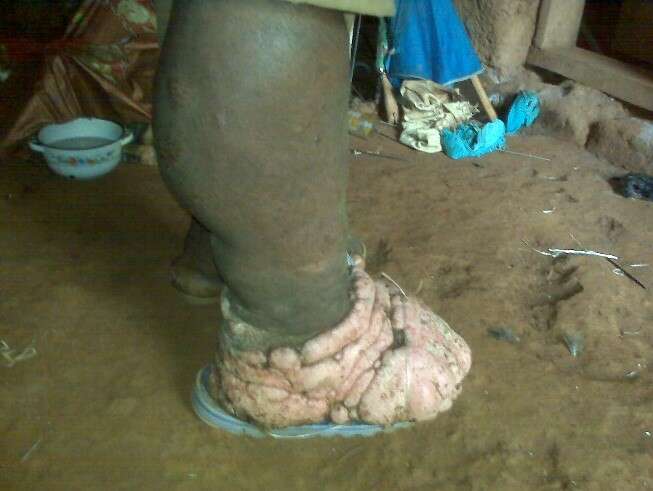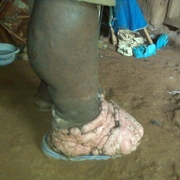
by Maureen Ayuk Tembei, Sally Theobald, Russell Stothard & Samuel Wanji
The burden of neglected tropical diseases is mainly discussed from a patient-centric perspective, however, there is a wider impact where these diseases touch the lives of those providing care and support. In this blog, we explore and expand upon broader issues of the Neglected Tropical Diseases (NTDs) burden and care drawing from experiences of work in Cameroon and the international literature.
- Catastrophic health expenditure for NTDs at household level
NTDs such as onchocerciasis and lymphatic filariasis (LF) lead to low economic productivity, catastrophic health expenditures, low quality of life, social stigma and isolation of affected persons and their households’ due to disabilities related to these diseases. The physical challenges associated with these conditions contribute to large productivity losses as most patients are of working age. The economic cost of managing the disability associated with these diseases are overwhelming and compounded by productivity losses (both paid and unpaid work). Household members suffer from financial losses trying to treat household members affected both directly and indirectly. Direct cost of treating these diseases (medical and non-medical costs) added to the productivity losses (economic, domestic and academic, e.g. dropping out of school leading to loss of knowledge) at household level for both patients and caretakers can be devastating.

Children dropping out of school to take care of affected family members. Photo Credit: Carter Center.
So far, the impact of NTDs have been focused on patients, ignoring the significant impact these diseases have beyond patients to their family members. These diseases interfere with household consumption of economic and domestic (household chores and leisure) activities thereby reducing their ability to attain good health (WHO, 2009). Households of affected persons may reduce their consumption by liquidating household savings or assets thus, diminishing their opportunities to generate financial and physical capital. These household health expenses at times go beyond World Bank recommendation for catastrophic health expenditure being 10% of household income. This was evident in a leprosy economic study in India rising by up to 40% of household income (Chandler et al. 2015).

Buruli Ulcer Photo Credit: Dr S Etuaful, Ghana
A study on the household cost management of another debilitating NTD; buruli ulcer at Akonolinga in Cameroon demonstrated a direct cost of €59.3 constituting 25% of household annual earnings for treatment of the disease while indirect productivity cost for both patients and family members was €64.4 (Koen et al. 2008). Also, Koen et al. reported that 63% of households cease to provide social and financial support for patients as a coping strategy.

Podoconiosis (Non-filarial elephantiasis) Photo Credit: Maureen Tembei
An economic study in Ethiopia on podoconiosis, an NTD with disability comparable to that of LF revealed direct treatment costs being equivalent to US$143 per patient per year excluding productivity losses and family impact. Studies in Cameroon on the household economic cost of podoconiosis (Tembei et al. 2018), revealed US$142 of household income being consumed annually for direct treatment of the disease constituting 40% health expenditure. Most NTDs are likely to impose catastrophic health expenses at household level.
2) Social Aspects of NTDs
Added to the economic burden, NTDs affect quality of life of affected households socially by reducing productivity, marginalization and causing stigma (Mousley et al. 2013) for both patients and their family members. Results from studies in Cameroon demonstrated almost equivalently low levels of quality of life and high levels of stigma, among podoconiosis and leprosy patients (Tembei et al. 2018).

Leprosy (Hansen's Disease) Photo Credit: Maureen Tembei
Social consequences are not only limited to isolation and exclusion from community events but also include; difficulties in finding employment, gaining education and getting married. Overcoming these consequences are vital activities for both social and economic well-being (Tora et al. 2014). Neglected Tropical Diseases are also quite stigmatizing in endemic areas and experiences are shaped by gender roles and relations (Desta et al. 2003; Kloss et al. 1997) and generation (Davey et al. 2007) in different ways both for patients and their family members. Some degree of stigma towards leprosy and podoconiosis affected households was observed in Cameroon (Tembei et al. Unpublished), implying that perceptions towards stigma related to NTDs are not limited to the patients but can also have repercussions for family members and caretakers within the household. This thwarts efforts to effectively treat and prevent NTDs as it negatively impacts health seeking behaviour of patients and act as a barrier to appropriate care from health workers and their local healers.
